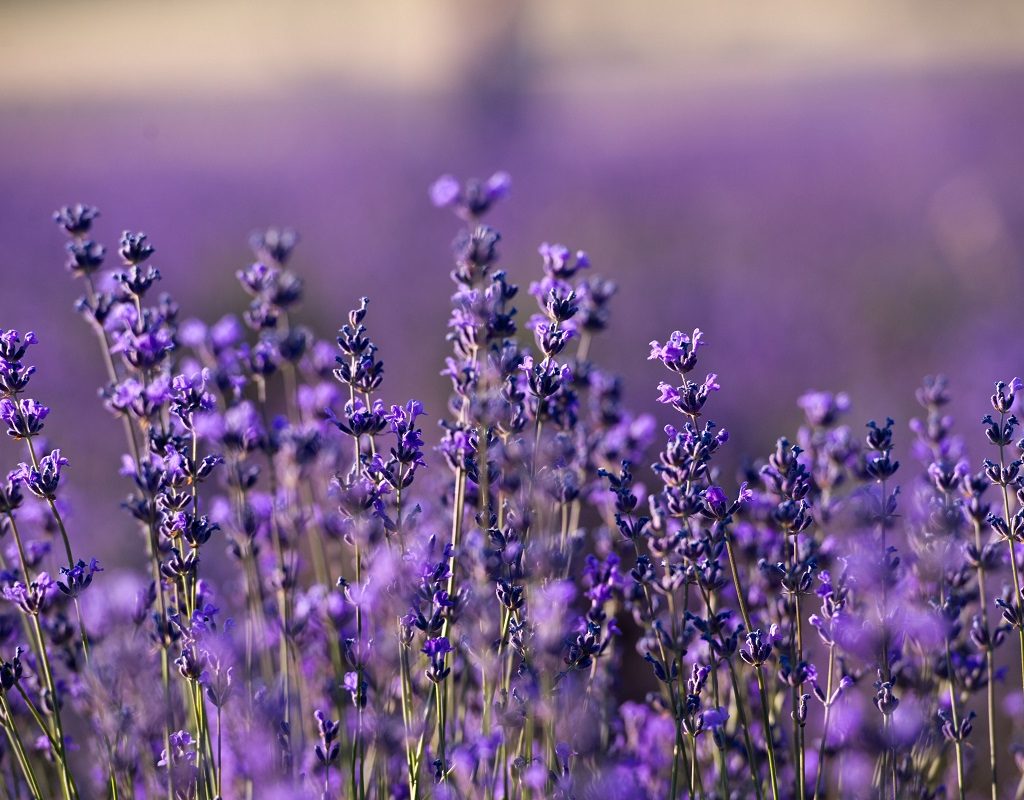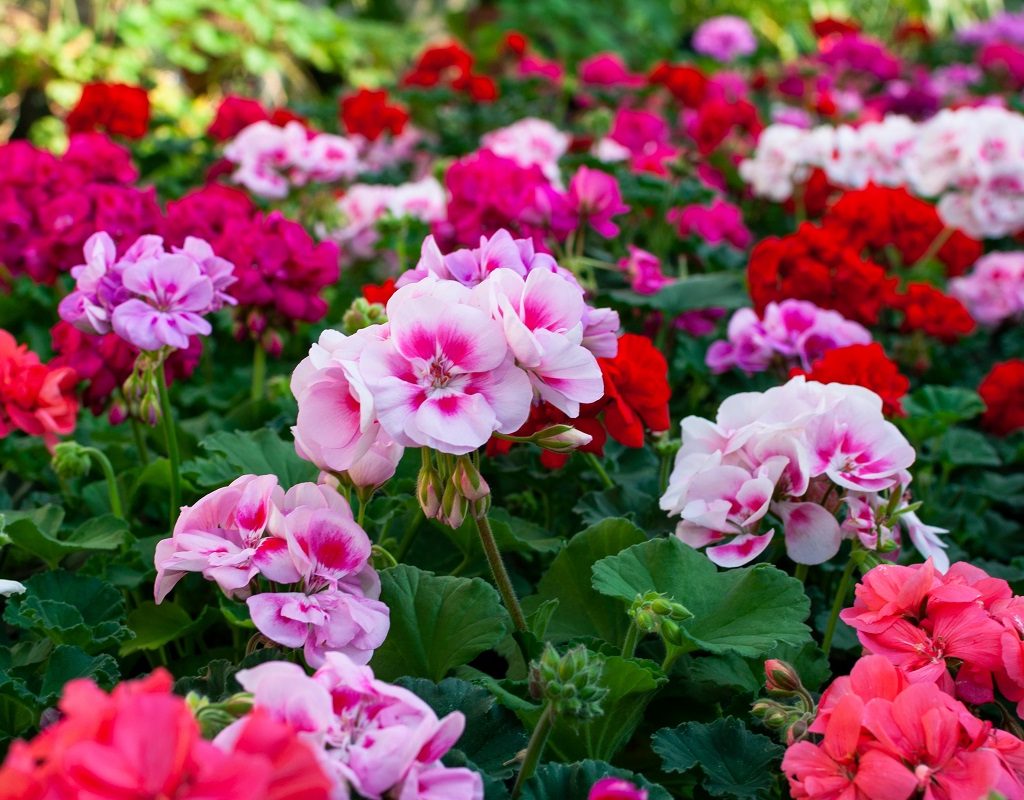Perennials are plants that tend to be cold hardy, including drought-tolerant flowers that die back in the winter and grow again in the spring. Drought-resistant flowers and plants are perfect choices for gardeners who live in drier climates and want to create a garden that won’t require an overwhelming amount of effort or maintenance from year to year; however, you’ll find these drought-tolerant perennials will make a beautiful addition to any garden.
Blanket flower
The blanket flower is incredibly easy to care for and will adjust to an environment easily, which is why you’ll often see them planted in roadside gardens and mixed in and around other plants. The blooms are gorgeous reds and yellows, and the stems can reach between 1 and 3 feet. They bloom from the beginning of summer until the first frost, which makes this flower a beautiful choice for a fall-themed garden. Plus, they attract a variety of different pollinators!
Blanket flowers grow primarily in hardiness zones 3 through 8. All they need is a location with full sun, and they’ll reward you with happy, fast growth. They’re drought-tolerant, which is perfect for those hot summer months, and as such have an aversion to soggy soil. The soil should be well-draining, and you need only water them once the soil has had a chance to dry out a bit.
Sedum
Sedum plants, commonly known as stonecrops, are hardy, drought-tolerant flowers that come in an array of colors and sizes. Their blooms last throughout the growing season, which makes them perfect for container growing, lining things like fences, and mixing throughout your flower garden. They’re low maintenance, attracting a variety of pollinators, and can even be cut and kept in a vase as decor for longer than other flowers.
Sedum plants grow in hardiness zones 3 through 10, preferring full sun to partial shade and well-draining soil. As long as they’re in a sustainable environment, you’ll have no trouble growing them and keeping them alive during the growing season. Extreme heat and sunlight can cause legginess, though, so you may need to cut them back once in a while to promote fuller growth.

Lavender
Lavender plants not only have beautiful purple blooms but can also fill your garden with one of the most lovely aromas a plant can offer. Its gray-green foliage lets the blooms be the star of the show, and you can plant lavender after the last frost of the spring. A perennial, lavender can thrive for up to 10 years (growing a bit in size each year) before you’ll notice a decline, so long as the plant is happy in its environment.
Lavender varieties generally grow well in hardiness zones 5 through 9 and love full sun and well-draining soil. Be cautious of growing in zone 5, as a harsher winter or particularly humid summer can cost you a couple plants here and there. Lavender will still grow, though, so you may just find yourself using it as a filler here and there to bring a fresh scent to your garden.
Globe thistle
Globe thistles are perfect for drought-tolerant, low-maintenance gardens. Like sedum, they’re a lovely choice for lining fences or the back edge of your gardens. They’re deer-resistant and are actually a great nectar source for butterflies. They have delicate, spherical blue blooms that turn into an attractive seed head in the fall.
Globe thistles do well in hardiness zones 3 through 9. They prefer full sun and a dry, shallow, rocky soil. They should be planted between May and June and should be watered weekly during the first month to make sure they’re established. From there, you need only water when the plant begins to look too dry. Seed heads can be trimmed off in the fall to prevent reseeding, but it’s not necessary if you want more globe thistles come next season.
May Night salvia
May Night salvia has beautiful purple-blue blooms that are low maintenance and don’t often succumb to pests or diseases. These drought-resistant flowers are fast growing, medium in size, and often loved for the colorful variety of life they attract to a garden (like butterflies and hummingbirds). They bloom in the last half of May and can reach up to 24 inches tall.
May Night salvia thrives best in hardiness zones 4 through 8. They love full sun and, like many flowers, need a well-draining soil to be a happy plant. Young plants will need a moderate amount of water to start but become drought tolerant once their roots have been established.
Kangaroo paw
Kangaroo paw has slender leaves and unusual blooms that grow in rows at the end of the stalk and has velvety fuzz, which gives the appearance of an animal paw — hence the plant’s name. These blooms can be purple, red, yellow, or orange depending on the variety, and they’ll bring an interesting, eye-catching look to your seasonal flower garden.
Because they grow naturally in drier, sandier places, they’re really only hardy in zones 10 and 11. They prefer full sun to partial shade and enjoy a well-draining soil with a medium moisture level. You should water these plants when you don’t have any rain for roughly two weeks to help maintain the soil moisture; plus, they should be protected from frost and strong winds. If you live outside of zones 10 and 11, you may have luck growing kangaroo paws outside during the summer and overwintering them indoors or in a greenhouse.
Beardtongue
There are roughly 250 species of beardtongue in North America alone, and they can grow in a variety of climates from mountains to deserts. These plants are known for attracting hummingbirds and bees with their beautiful purple blooms that grow clustered at the top of a stem.
Beardtongue plants grow primarily in hardiness zones 3 through 8, preferring an environment with full sun and a well-draining soil with a dry to medium moisture level. They don’t love incredibly soggy environments, but will do well in ones that have drier climates. This plant may require a bit of extra maintenance, however, as they tend to grow aggressively when in their ideal environment. That means if you’re constantly finding yourself pulling up new plants from where they don’t belong, you’re doing something right!
Lamb’s ear
This beautiful perennial is grown primarily for its thick, fuzz-covered foliage. The flowers themselves aren’t particularly showy, but the leaves will add a lovely texture to your garden. Lamb’s ear is the ideal plant to grow when you need a bit of extra ground covering, as removing the flowers will encourage fuller foliage.
Lamb’s ear is hardy in zones 4 through 7 and is fairly easy to maintain so long as it’s in a dry- to medium-moisture soil. They prefer sunny locations, and if you notice leaves that aren’t doing too hot in the warmer months, prune them with care so the plant can direct its energy to the healthier foliage. Take care not to water these plants from directly above as any moisture left on the leaves can cause damage.

Geraniums
Geraniums are hardy flowers. Most varieties bloom in late spring, and some can even continue blooming until the first frost of fall. Because they grow low to the ground and can be a bit bushy, they often resemble a small shrub. This is a drought-tolerant perennial that, once planted and if cared for well, can continue to regrow each spring for decades.
Geraniums thrive in hardiness zones 10 and 11, preferring to be in full sun to partial shade. They love well-draining soil with a medium moisture level, and most varieties will be tolerant of heat and drought. If it’s been a couple of weeks since the last rainfall, you should give them some water; however, once their roots are established, they can go for slightly longer stretches without any, if needed.
Trumpet vine
Trumpet vines can grow in a variety of conditions, rewarding you with fast-growing vines full of green leaves and beautiful red/orange blooms. Their blooms grow mostly during the summer and are great for attracting wildlife like hummingbirds. If cared for properly, this gorgeous perennial will remain established for decades.
Trumpet vines grow well in hardiness zones 4 through 9, loving full sun to partial shade and a well-draining soil. They thrive in dry to medium moisture, dying back during the winter and growing again in the spring. This plant won’t fully become established until there’s a span of either hot weather or low rainfall, and the primary maintenance you’ll need to do is pruning back the plant to keep the vines from taking over.
Many gardeners love having at least one or two perennial plants around since proper care can result in a long-term plant for the garden. If you live in a particularly dry area, you can create a garden full of drought-tolerant flowers and other perennials that will help you garden with ease year after year.


